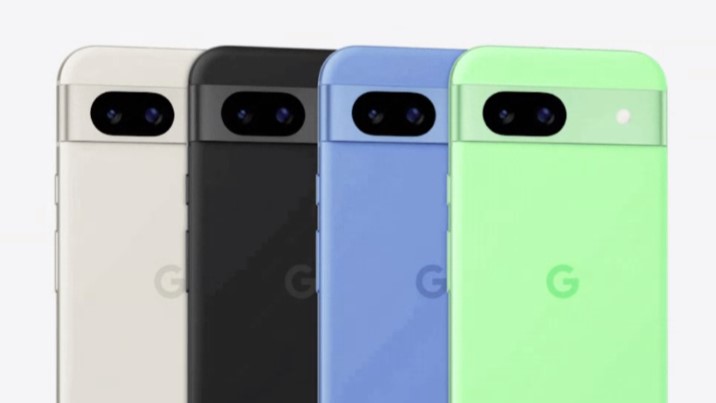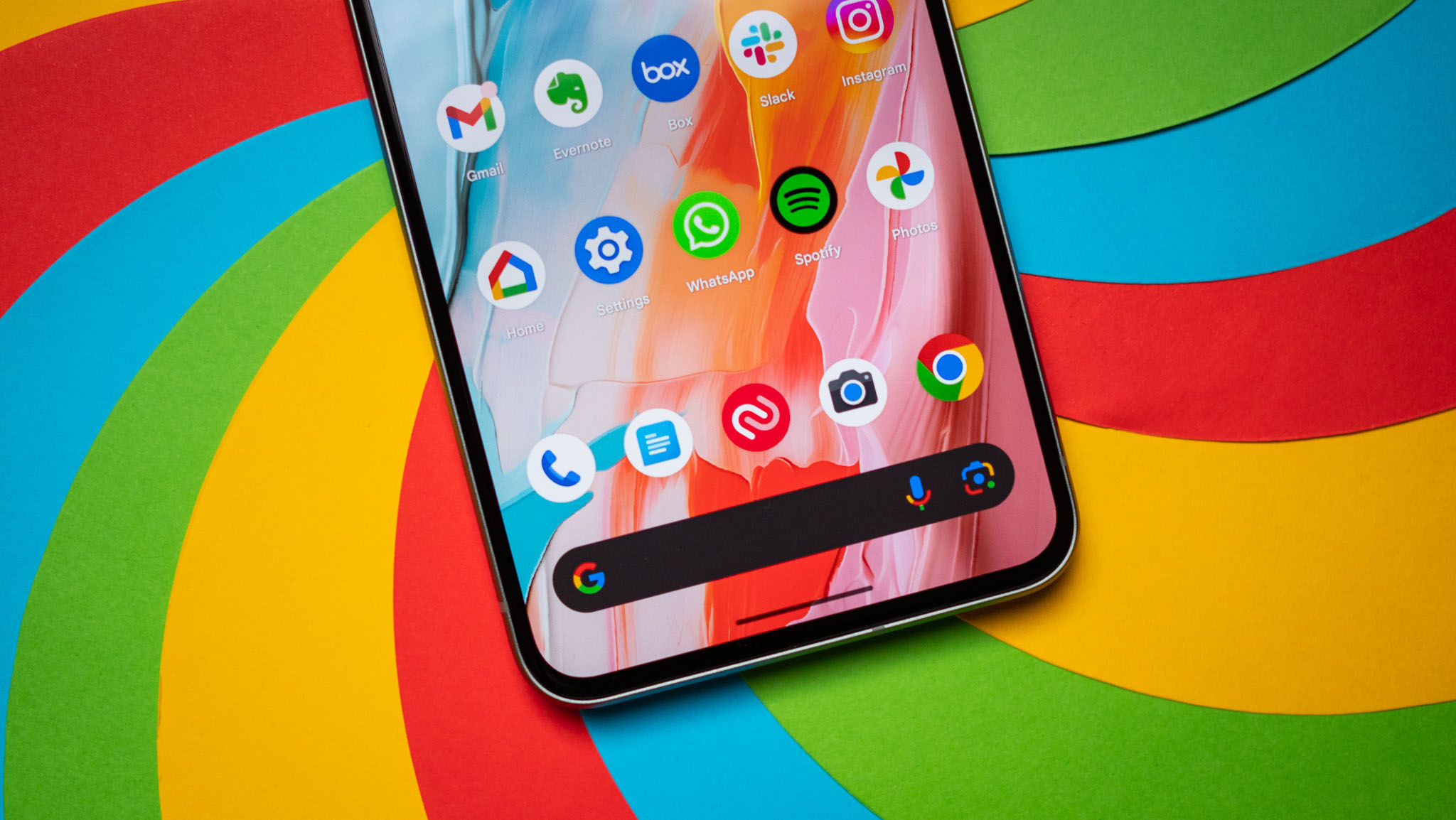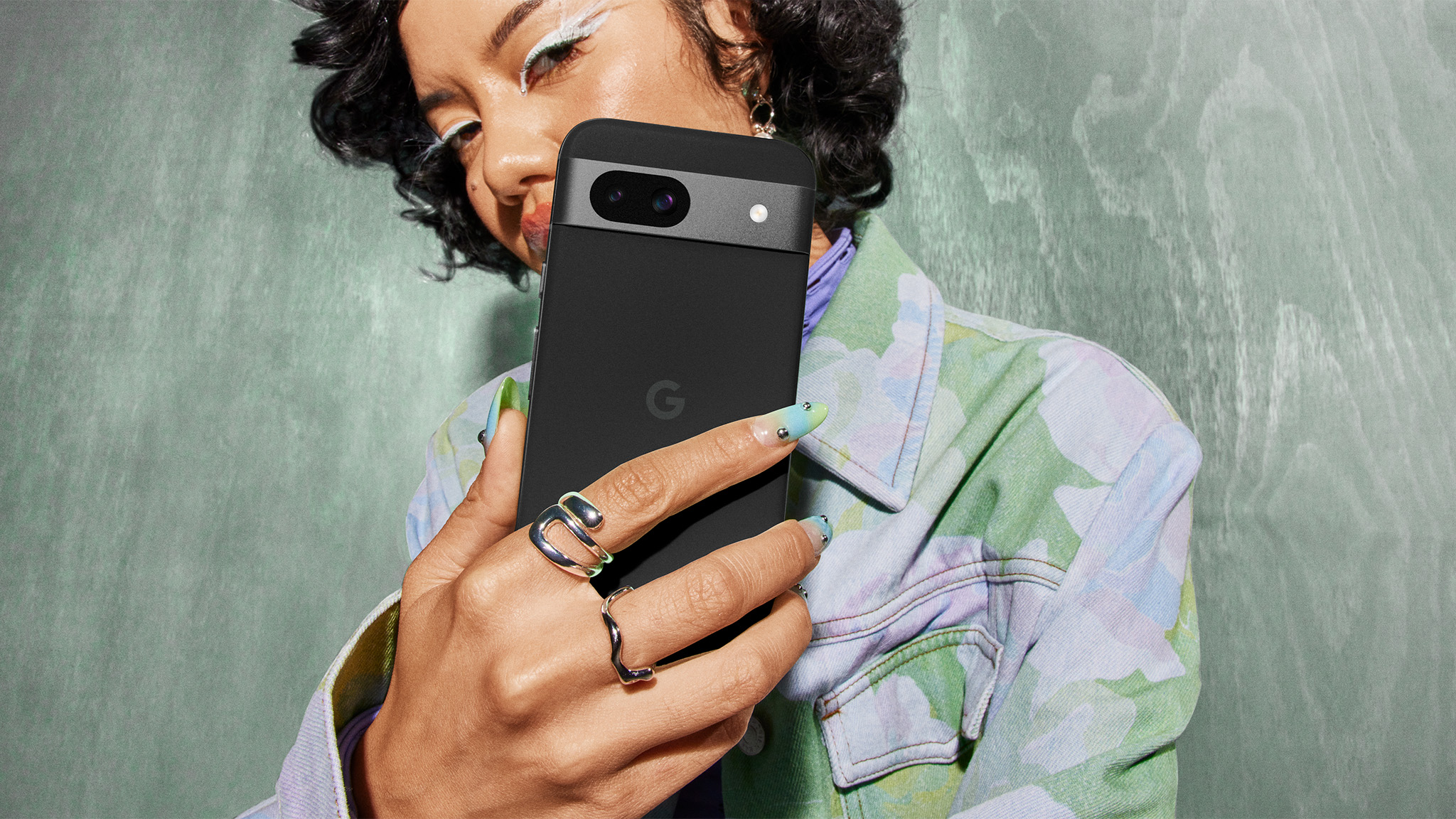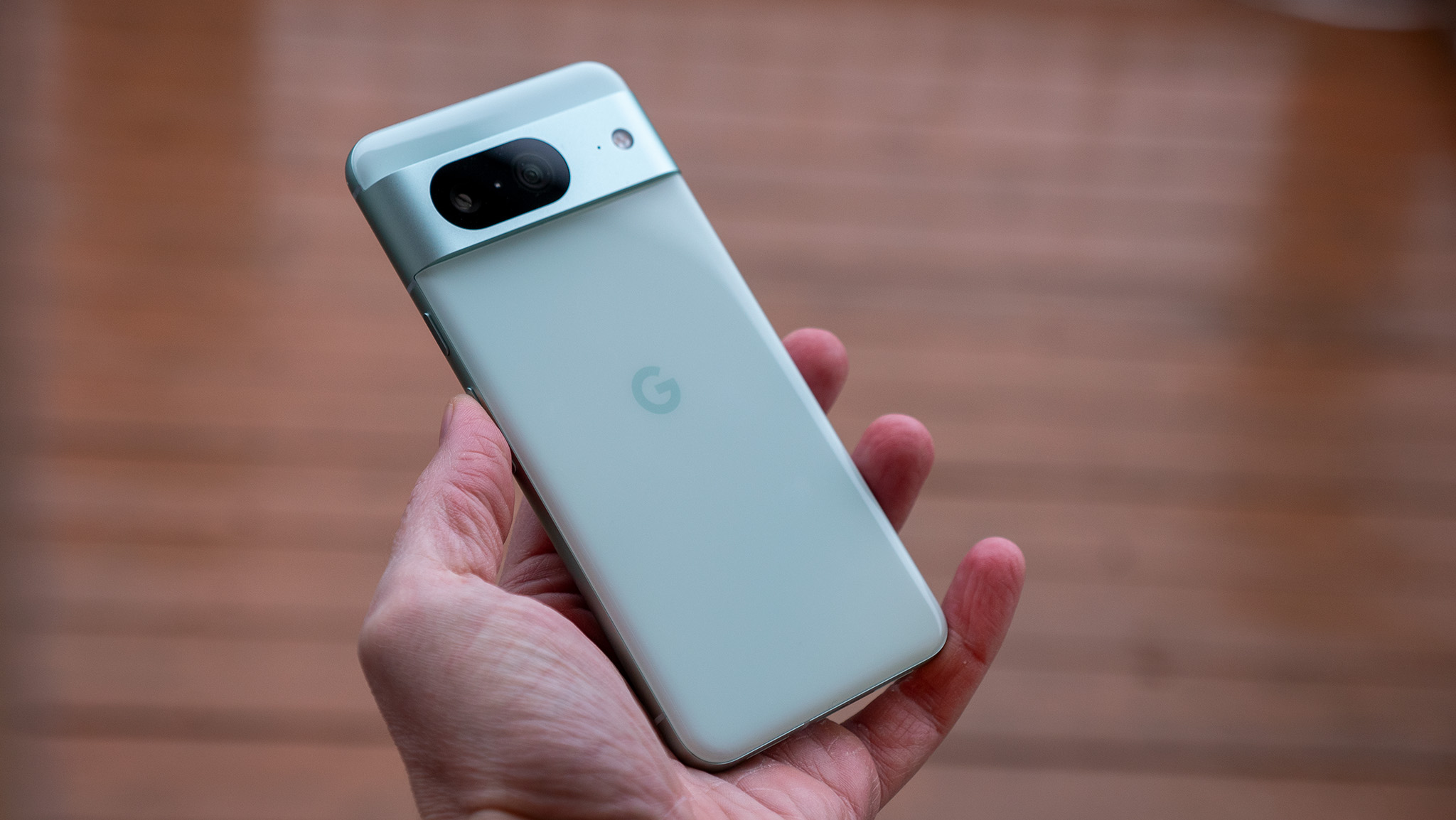
Barely a compromise
The Google Pixel 8a has shed most of the downsides of past Pixel "A" phones like poorer display quality and less RAM, making it a great mid-range option with very few downsides. Google does block a few mainline features from its cheaper model to upsell you, but almost nothing feels like an insurmountable issue.
For
- Spend $200 less
- Tensor G3 chip with 8GB RAM
- FHD 120Hz display w/ 2,000 nits
- Comparable battery life
- 7 years of OS updates
Against
- Cameras lack autofocus, capture less light
- Slower charging speed
- Lower Gorilla Glass and IP protection
Niche upgrades
The Pixel 8 has better cameras than the Pixel 8a for photography buffs who can't afford the Pixel 8 Pro. If you want to use a Pixel for its 7-year software lifespan, the Pixel 8's stronger Victus protection could make it more likely to withstand the wear and tear of life. It'll also charge faster, especially wirelessly.
For
- Better, brighter AF cameras with Macro Focus
- Smaller display bezels
- IP68/ GG Victus protection
- Wi-Fi 7 support
- Faster charging
Against
- More expensive
- No major upgrades to performance, display
- Missing some 8 Pro camera tricks
Comparing the Pixel 8a vs. Pixel 8 requires diving deep into Google's tech specs for both phones. Intentionally designed to be quite similar to the Pixel 8, the Google Pixel 8a shares common traits like its Tensor G3 chip, 120Hz FHD display, and seven years of OS updates.
Launching at $499, the Pixel 8a is similar enough to the Pixel 8 ($699) that you're probably wondering where the price difference comes in. Many of the differences are minor, but you might decide that you can't live without specific Pixel 8 upgrades like its auto-focusing cameras
Google Pixel 8a vs. Pixel 8: Design

Despite its slightly smaller display, the 6.1-inch Pixel 8a is one gram heavier and about 1.5mm taller and wider than the 6.2-inch Pixel 8. You'll notice aluminum bezels along the 8a's front, while the Pixel 8 is thinner along the edge. That being said, you won't notice a difference holding them, especially once you add a case.
Both Pixels use recycled aluminum for the camera bar and side frame, but the Pixel 8a has a matte composite back, while the Pixel 8 has a glossy glass back with Gorilla Glass Victus protection. It's a judgment call whether you prefer a matte or gloss look, but most of the AC staff prefer the Pixel 8a's matte look since it's less likely to accentuate fingerprints.
They share that classic Pixel camera bar aesthetic, with the dual camera sensors aligned to the left cutout and the LED on the right. It gives the Pixel 8a a unique look compared to most budget Android phones.

The Pixel 8 ships in Obsidian, Hazel, Mint, and Rose, while the Pixel 8a has Obsidian, Porcelain, Bay, and Aloe.
One non-aesthetic design difference to note: the Pixel 8a only hits IP67 protection, slightly below the Pixel 8's IP68 protection. Technically, both phones can be submerged in one meter of water for 30 minutes, but the Pixel 8 is more likely to survive at slightly greater depths or longer durations. Don't go swimming with either phone, though.
While both phones have stereo speakers, the Pixel 8 has one extra microphone (3) than the Pixel 8a (2), which could make your voice clearer for phone calls.
Google Pixel 8a vs. Pixel 8: Display

Spec-wise, the 6.2-inch Pixel 8 and 6.1-inch Pixel 8a displays are extremely similar, aside from the slight size difference.
They share AMOLED displays with 2400 x 1080 resolution and 120Hz refresh rates (a step up from the Pixel 7a's 90Hz display). They each hit 1,400 nits for HDR or 2,000 nits for peak brightness. Visually, they have the same 1-million-to-1 contrast ratio and 16 million colors. Technically, the Pixel 8a beats the Pixel 8 by two pixels per inch (430 vs. 428), but you won't notice.
Both phones have a flat-edged design — none of the curving you get with the Pixel 8 Pro or other flagships — and an in-display optical fingerprint sensor.
As mentioned before, the Pixel 8 has slightly smaller bezels than the Pixel 8a, which looks more visually appealing. Plus, the Pixel 8a only has Gorilla Glass 3, which is much less durable against cracks and scratches than the Victus on the mainline Pixel 8.
Google Pixel 8a vs. Pixel 8: Hardware and cameras
Google gave the Pixel 8a the same Tensor G3 chip, 8GB of RAM, and UFS 3.1 storage as the Pixel 8, presumably making their performance identical. Be warned, though: we learned that the Pixel 7a had a slightly worse version of the Tensor G2 a month after launch, so we can't be certain of the 8a's performance until we test it for ourselves.
Google's spec sheets list both phones as lasting 24 hours in normal conditions or 72 hours in Extreme Battery Saver mode. Specifically, the Pixel 8 has a typical 4,575mAh capacity or 4,485mAh minimum; the Pixel 8a hits 4,492mAh (typical) or 4,404mAh (minimum).
While the Pixel 8 does "win" here, the extra capacity will go straight to the extra display space, so it should be a wash. The Pixel 8 averaged about six hours of active screen time in our review testing, so expect the Pixel 8a to last about the same amount of time.
Google lists both phones as having "Fast Charging," but only the Pixel 8 has a guaranteed 50% charge in 30 minutes with 27W speeds. The Pixel 8a is only rated to hit 18W charging. While the Pixel 8 took about 75 minutes to recharge fully, we expect the Pixel 8a will take slightly longer.
As for wireless charging, the Pixel 8a will likely use the same (painfully slow) 5W charging as the Pixel 7a, giving the Pixel 8 the advantage for wireless charging pad owners.

Most of the key Pixel 8a vs. Pixel 8 differences pertain to camera specs and features.
While the Pixel 8a main camera has 64 megapixels to the Pixel 8's 50, the latter has an "Octa PD" system that enables autofocus shots, while the Pixel 8a has fixed focus. For point-and-shoot photography, the Pixel 8 is the simpler user option. You also have a lower aperture for better light capture. Both main sensors have 8X Super Res Zoom and optical image stabilization.
Only the Pixel 8 ultrawide camera has autofocus, and it gives you about six extra degrees of width on its shots. Both have the same aperture, but the Pixel 8a has a smaller pixel size.
For the front camera, both phones use a fixed-focus lens. Once again, the Pixel 8a selfie has a higher resolution (13MP) and the same aperture, while the Pixel 8 has a 10.5MP dual PD camera with a larger pixel size. Of the two, only the Pixel 8 can film 4K 60FPS selfie videos, while the Pixel 8a maxes at 30FPS.
Thanks to its Tensor G3 chip, the Pixel 8a has most of its more expensive sibling's epic Google AI tricks, including Magic Editor, Best Take, and Audio Magic Eraser. However, Google reserves a couple of tricks for the Pixel 8, like Macro Focus, Macro Focus Video, and Cinematic Blur.
Google Pixel 8a vs. Pixel 8: Software and connectivity

Whether you buy the Pixel 8 or Pixel 8a, you'll get seven years of software updates and security updates. Both launched with Android 14, which means they'll receive Android 21 in seven years.
It's fair to ask whether the Tensor G3 will hold up for that long, and you can rest assured that neither phone will get whatever new camera tricks come to the Pixel 9. Nevertheless, this longevity is appreciated since it could increase both phones' eventual trade-in value.
Google has also promised to bring Gemini to the Pixel 8a, in addition to popular AI tricks on the mainline Pixels like Circle to Search and Pixel Call Assist.
Both phones support most 5G bands, including mmWave, in the United States. If you have a Wi-Fi 7 router, the Pixel 8 is better equipped to take advantage of the extra speed; the Pixel 8a will get the benefits of Wi-Fi 6E routers, at least. Also, the Pixel 8 has dual-band GPS support for better accuracy while using Google Maps, while the Pixel 8a might be more prone to signal blockage.
Google Pixel 8a vs. Pixel 8: Which should you buy?

As of publication, the Pixel 7a sits on our list of the best Android phones, though the Pixel 8a is likely to supplant it once we've reviewed it. It has the same perks — a mainline Tensor chip, Google AI processing behind solid cameras, and a cool design — while fixing many of its drawbacks, like the glossy back, dim brightness, lower refresh rate, and lack of 256B storage option.
The Pixel 8 still has the 8a beat in a couple of areas. Maybe you like to go caseless and need extra protection, have a Wi-Fi 7 router, like macro photography, or are really passionate about wireless charging. Otherwise, I think you can happily buy the Pixel 8a without the fear of missing out on anything drastic, especially since you've gone this long without buying the Pixel 8.
Barely a compromise
Choose the Pixel 8a for a reasonable price, respectable performance, fun camera AI trickery, and more security updates than any other mid-range phone is likely to get. Skip it if you can't do without the best possible camera sensors offered by the mainline Pixel 8s.
Niche upgrades
Choose the Pixel 8 for the best protection, connectivity and charging speeds, and a slightly larger display. Skip it if you want something more affordable, or you'd prefer the Pro for the best possible speed and photography.







